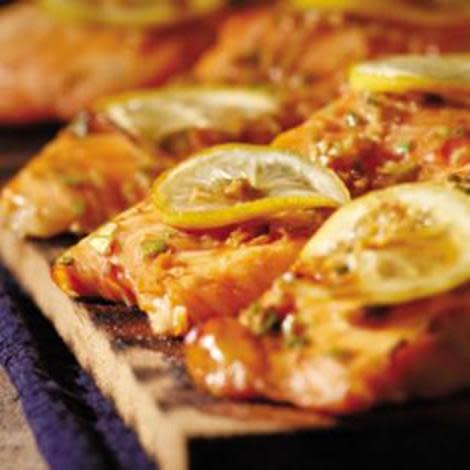How to Grill Fish Perfectly Every Time

By Hilary Meyer, Associate Food Editor, EatingWell Magazine
For some reason, seafood seems to be one of the most intimidating foods to grill. Fish tends to be delicate and hard to maneuver without mishap, and smaller foods like shrimp and scallops are so small, that they can overcook in a flash or worse yet, fall through the grates into the fire. But truthfully, they're all easy to master once you know a few tricks of the trade. Here are a few tips to help you achieve perfectly grilled seafood every time you grill:
Don't Miss: Our 13 Best Grilling Tips
6 Fish to Eat and 6 to Avoid
1. Keep the Skin on the Fish
Plenty of recipes call for your fish "skinned or "skin removed" which is fine if you're baking it, for example, and don't have to fuss with it much. But grilling is somewhat of an "action" cooking method where you may have to interact with your food a little more to get it cooked just right. To prevent your fillets from falling apart when you move them, consider leaving the skin on the fish (if it comes that way) when you grill it. It helps to hold the fish together in one piece. Or better yet, eat it! Some fish like trout or mackerel have thin skin that gets delightfully crispy when grilled. Tougher-skinned fish like salmon and halibut are best without their skin. You can gently remove the skin from the fish when it has finished cooking.
Don't Miss: 7 Surprising Foods You Can Grill
2. Use a Fish Basket
Another way to keep fish from flaking apart is by using a fish basket. They come in a few shapes and sizes, but the principle is the same: you place the fish in a basket that keeps the fish in place. Instead of flipping the fish itself, you flip the basket that holds the fish so it stays secure without falling apart.
3. Cook It in a Packet
You wouldn't steam your steak, but steaming fish is actually okay. It's a great way to keep fish moist. And you can do it easily on the grill by cooking it in a foil packet. Simply stack two 20-inch sheets of foil. Coat the center of the top layer with cooking spray. Layer your ingredients on the foil. (You can add other things to your packet like thinly sliced veggies or lemon.) Bring the short ends of the foil together, leaving enough room in the packet for steam to gather and cook the fish. Fold the foil over and pinch to seal. Pinch seams together along the sides. Place the packets on a gas grill over medium heat or on a charcoal grill 4 to 6 inches from medium coals. Cover the grill and cook just until the packet contents are done (about 8-10 minutes for a salmon fillet or equivalent, about half that for shrimp and scallops). Handle the hot packets with a large spatula or oven mitts. Carefully open both ends of the packet and allow the hot steam to escape.
Don't Miss: 7 Simple Steps for Cooking in Packets
4. Try Using a Plank
It may sound fancy, but grilling seafood on a plank is much easier than grilling fish directly on the grates. The only trick you need to know is that if you are using a wooden plank, you'll have to soak it in water first for at least 2 hours before grilling. Other than that, you simply place your fillets on the pre-soaked plank and cover your grill, and basically let it be until it's done. No flipping required. You may have to adjust the position of the plank over lesser heat if your grill is extra hot and the fish is not quite done cooking. You'll enjoy the subtle smoky flavor grilling on wood gives your food. Don't want to use a wooden plank? Make one out of a double layer of heavy-duty aluminum foil. Spray the foil with cooking spray to prevent sticking.
Recipe to Try: Plank-Grilled Sweet Soy Salmon (pictured)
5. Use a Skewer or Cook in a Basket
This pertains to small guys like shrimp and scallops. Sure you can grill them right on the grates, but who wants to flip them constantly or risk losing them to the fire? Threading them on a skewer will make things a lot easier. You'll avoid losing them, and you'll only have to flip the skewers once or twice instead of tending to each shrimp or scallop individually. No skewers? You can grill shrimp and scallops in a vegetable grill basket either purchased or homemade (by making a basket out of a double layer of heavy duty aluminum foil.)
What are your tricks for perfectly grilled seafood?
By Hilary Meyer

EatingWell Associate Food Editor Hilary Meyer spends much of her time in the EatingWell Test Kitchen, testing and developing healthy recipes. She is a graduate of New England Culinary Institute.
Related Links from EatingWell:
